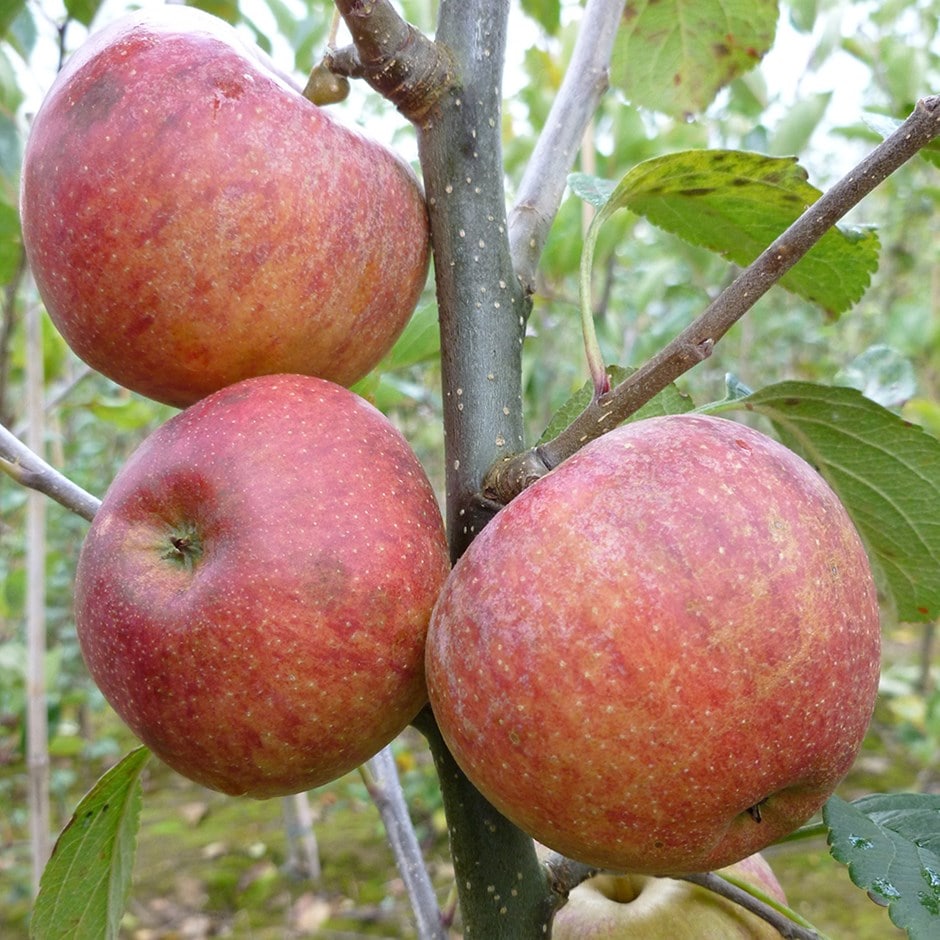apple 'Kidd's Orange Red'
eating / dessert apple
This tree is deciduous so it will lose all its leaves in autumn, then fresh new foliage appears again each spring.
- Position: full sun
- Soil: moderately fertile, moist, well-drained soil
- Rate of growth: average
- Flowering period: March to April
- Hardiness: fully hardy
- Garden care: When planting your apple tree, prepare a hole up to three times the diameter of its root system. Fork over the base of the pit in readiness, incorporating plenty of organic matter into the backfill and planting hole. Avoiding frozen and waterlogged soil, trees should be planted out as they arrive. If you've ordered a bare root tree, soak the roots in a bucket of water for half an hour prior to planting - or if this is not possible, they can be heeled in temporarily, covering their roots with soil, or potted up. Once in the ground, stake firmly and keep the base weed-free. Apply a balanced fertiliser in early spring to support growth and fruiting and provide regular watering during hot, dry spells. The main winter prune, avoiding frosty conditions, involves removing dead, dying, and diseased wood to create an open crown. Additionally, reduce leaders and laterals by a third to establish an airy structure without crisscrossing branches. In August, summer prune by shortening side shoots longer than 20cm (8”) back to three leaves, promoting fruit ripening and encouraging more fruit buds.
An easy to grow, award winning (RHS) dessert apple variety that produces sweet, crisp apples with a honey-like flavour. The medium-sized, tangy fruits have irregular russet patches on a yellow skin blushed with orange-red give it a marbled appearance, and creamy white flesh that mellows slightly with age. ‘Kidd's Orange Red’ apples are suitable for harvesting and use from November through January after ripening around mid-October.
Pollination information: This apple belongs to pollination group 3, and is not self fertile, so does not need a pollinating partner to produce a crop of apples. Cross-pollinate with other apples in this group or those from group or those from groups 2 or 4.
Pollination information: This apple belongs to pollination group 3, and is not self fertile, so does not need a pollinating partner to produce a crop of apples. Cross-pollinate with other apples in this group or those from group or those from groups 2 or 4.

